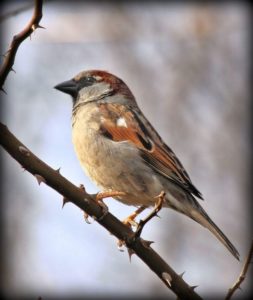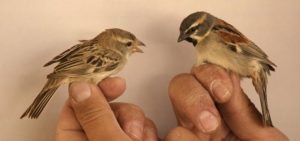
City Of Hyderabad Witnesses Rise In Sparrow Population
Hyderabad: The city of Hyderabad has witnessed a slow growth in Sparrow population –a small little bird. City birdwatchers and conservationists say that they have kept a close watch on the growth.

They have spotted the little cute birds in many common areas like airport areas and in many residential colonies which are abound with nesting boxes. And also in open areas like wild vegetation, they are spotted more frequently, the activists observed. But they are skeptical of the problems they face during their stay here in the city.
“There is better awareness now, and there is a clear rise in frequency of sparrow sighting. Within the lane I live in, I have seen the number of sparrow nesting go up from one to 15 in just a year,” said member of the Birdwatchers Society of TS&AP (BSAP) Azam Khan, who resides in MLA Colony of Banjara Hills.

The activists are of the opinion that the main reason for the past decline of sparrow population in the City of Hyderabad was pesticides, pigeons, cats and closed-shut homes.
“I believe that the lack of worms, widespread use of pesticides and the closed, no-ventilation homes we live in today are the reasons for the decline in sparrow population. Sparrows need worms to feed their chicks, grains for adults, and nesting spaces where they are safe from predators. Since they are small, they cannot nest in trees and open spaces, as larger birds and cats drive them away,” says Rajani Vakkalanka, who is an animal-and-environment conservation activist, and founder of Citizens’ Action for Local Biodiversity Awareness and Conservation group (CALBAC).
Rajani is a resident of Attapur, which is on the Southern part of the City, a locality in which she believes has great potential to bring back the sparrows, thanks to the present day situation of having open spaces and vegetation spots. “If authorities and civil society commit to responsible development, the birds will come back without us having to try so much,” she added.
Khan, a regular observer of birds for many years, states that cats and pigeons are the main reasons for their nesting problems. So they seek help of humans to be able to build safe havens near them.
Khan, who has been a birdwatcher for many years, believes that cats and pigeons are perennially in the way of sparrows, small birds which need human proximity for safe nesting.
“Even if you put up nest boxes in trees, the sparrows will not house them. You need to place nest boxes in balconies, at spots that are inaccessible to cats and pigeons, and are of the right size. If the entrance hole is big enough to accommodate bigger birds, the sparrows will reject the box,” says Khan, adding that the perfect size of the nest box for the little birds (sparrows) would be 3×3 inches in height and width, but 12-14 inches in depth, giving it a tunnel effect.
Sparrows are little birds that are plump, brown and grey in features and have a short tail and stubby, powerful beaks.